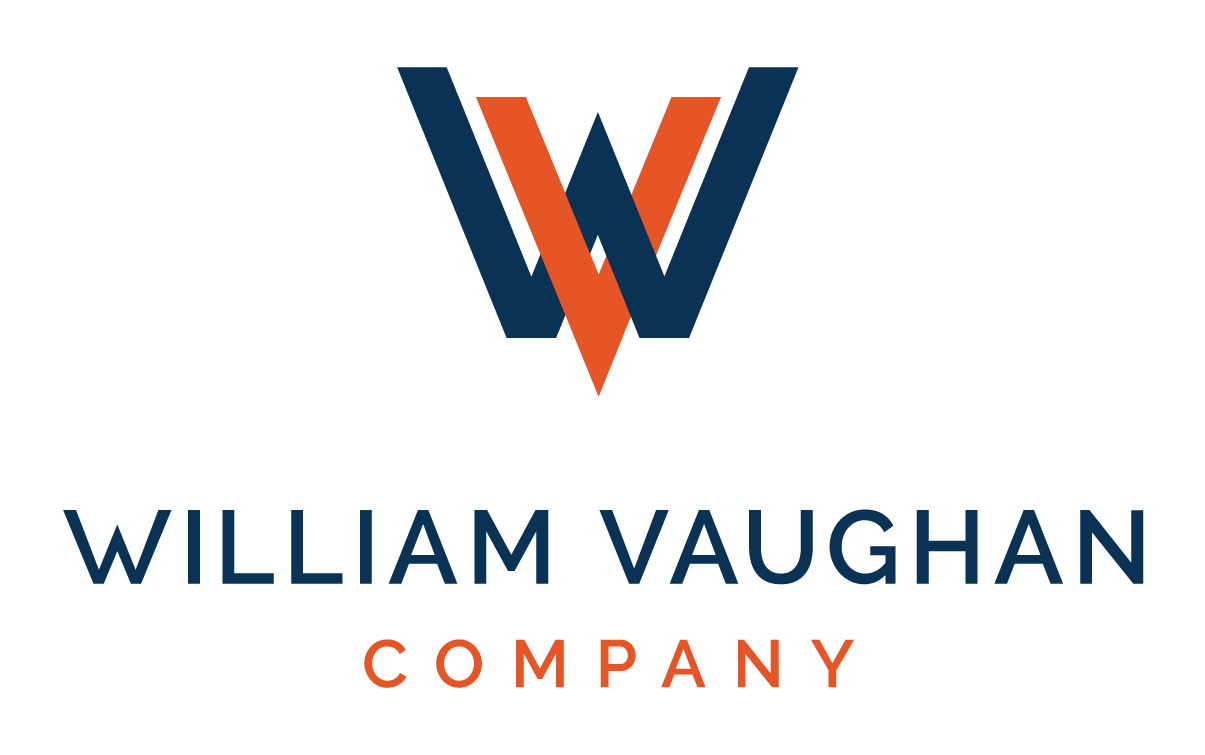Industry 4.0 In A Pandemic World
Apr 08, 2021
In our last manufacturing-focused blog, we explored the topic of the fourth industrial revolution known as Industry 4.0. This highly developed revolution focuses on the use of technology, automation, and digitization for operational efficiency. Many are now curious to know how this new phase of manufacturing was impacted by the disruption of the pandemic. With a vast shift from in-person work to a more remote setup, Industry 4.0 experienced a surge in the scaling of related technologies.
According to a survey by McKinsey, of their 400 respondents, 94% of respondents told noted that Industry 4.0 had helped them to keep their operations running during the crisis, and 56% percent said these technologies had been critical to their crisis responses. For those organizations who had already taken the leap to incorporate Industry 4.0 into their daily operations, the pandemic was a win situation. These early adopters were simply able to rely on their automation to overcome the loss of physical presence in their factories and at the same time utilize their real-time data analytics to assess their operations and make prompt adjustments.
For others, the pandemic was a wake-up call. Manufacturers who have yet to make the transition to Industry 4.0 were met with the stark reality of being unable to pivot during the disruption which left them negatively impacted. According to the McKinsey survey, 56% of respondents that hadn’t implemented Industry 4.0 technologies prior to COVID-19 found themselves constrained in their ability to respond to COVID-19 in the absence of digital technologies to support them.
While the pandemic made organizations realize the importance of Industry 4.0. It has also hindered progress. For some, the pandemic wreaked havoc on cash flow and talent creating a sort of catch-22. The need for automation and digitization is apparent, but without the capital to support the transition, manufacturers are stuck in a rock and a hard place.
So what is next? Manufacturers must first recognize the value-add of Industry 4.0 and commit to scaling their operations to include features of this forward-thinking revolution. Once committed, the next step is to develop a detailed plan. Given limited resources, having a strategic approach will ultimately maximize the benefits of smart technology without having to reprogram due to short-fixes. The biggest hurdle is making the decision to scale and take the first step. Whether it’s setting up your current system to pull data in an efficient manner for future data analytic software or focusing on best practices for remote working, committing to Industry 4.0 is the first step. Don’t make the mistake of discounting Industry 4.0, it could be deadly in a time of disruption. Organizations that learned from the pandemic, have embraced this new revolution, and can be nimble during uncertainty are those who will survive and thrive.
Categories: COVID-19, Manufacturing & Distribution
The Fourth Industrial Revolution: Industry 4.0
Mar 10, 2021
While many industries experience change and opportunity, manufacturing companies are embracing one in particular: Industry 4.0. This initiative joins Information Technology (IT) with Operational Technology (OT) to improve processes, increase automation, and support data exchange.
Industry 4.0 is often used interchangeably with the notion of the fourth industrial revolution. It is characterized by, among others, 1) more automation than in the previous revolution, 2) the linking of the physical and digital world through cyber-physical systems, enabled by Industrial IoT, 3) a shift to smart products and automation to define production steps, 4) closed-loop data models and control systems and 4) customize data and dashboards
Industry 4.0 is comprised of eight technology sectors that inspire new ways of thinking and working, Additive Manufacturing & Advanced Materials, Artificial Intelligence (AI), Big Data, Cloud Computing, Cyber Security, Modeling, Simulation, Visualization & Immersion, Robotics, and the Industrial Internet of Things (IoT) are the key aspects of Industry 4.0.
There are numerous advantages to entering the fourth industrial revolution, each of which can have a great impact on your business. The pursuit of more efficient, customer-centric processes paired with Industry 4.0 pushes past optimization and leads to new opportunities and innovation.
Here are some insights into a few of the benefits of Industry 4.0:
- Enhanced Productivity – Optimization and automation will lead to saved costs, increased profitability, limited waste, reduced opportunity for delays and errors, faster production, and overall improved function of the value chain.
- Real-Time Optimization – Customers at every step of the value chain expect good products produced fast. By increasing automation, production increases to real-time operation leading to satisfying increased expectations while keeping the process moving forward.
- Increased Business Continuity – Predictable and preventive maintenance as a result of digital technology means less downtime and fewer expenditures
- Higher Product Quality – Cross-collaboration between departments and the ease of data sharing means improvement and modifications are made quickly which results in a higher quality of product
- Lower Costs – Automation and system integrations also mean a reduction in waste, efficient use of resource and materials, reduction of downtime which ultimately leads to lower overall operating costs
- Improved Agility – With real-time data available at your fingertips, being able to forecast and pivot become much easier
- Innovation – Increased visibility across production lines, distribution chains, and supply chains allow for innovation and improvement whether it be for process enhancement or new product development.
There’s no doubt Industry 4.0 has enabled manufacturers to increase operational visibility, reduce costs, expedite production times, and deliver exceptional customer support. Over the coming months, William Vaughan Company is going to explore various topics involving the importance of this new era, strategies to implement, and ways to leverage Industry 4.0 to help you lead in the markets where you compete. Stay tuned for more on Industry 4.0.
Categories: Manufacturing & Distribution
The Evolution of Costing Accounting and What Does It Mean For The Future?
May 05, 2015
One of the topics frequently brought up in my conversations with cost managers is the delayed conversion by today’s manufacturers to alternative costing methods. There seems to be a general lack of willingness for today’s businesses to consider changing their methods of costing to something that is perhaps more suitable to their needs.
I am constantly amazed by the number of very successful and technically advanced businesses which continue to employ costing models that were developed 40 or 50 years ago.
The IMA has completed formal research regarding common costing systems utilize in contemporary manufacturing companies. It is my recollection that close to 80% still use standard costing for their method of product costing, as well as valuing inventories. Based on my personal experience, I believe the percentage to be much greater as I rarely hear of organizations that are not using standard costing. Many businesses have attempted other methods, more specifically those that have converted to activity-based costing 10 or 20 years ago. However, almost all of them abandoned the system due to the complexities in maintaining ABC. I have heard of other companies that have actually developed two systems: one system to determine product cost for profitability and the another simply for the purpose of valuation of inventory.
I believe in the second case that is overkill. I understand the desire for accurate and timely cost information but the expense and necessities of maintenance that go along with maintaining two systems is certainly onerous and probably not necessary if the one system is designed with enough versatility.
The real question is why are companies continuing with standard costing when there are other methods available? I believe the answer lies in several common themes. The first is that business managers must have, at least, a rudimentary understanding of their cost system to be able to utilize it effectively. Many of today’s managers started their careers with standard costing systems and, as a result, have become comfortable. To suggest a new approach is not well received.
Secondly, I believe standard cost is viewed as being a relatively simple system which is easier to implement and sustain. Therefore, it is labeled worthwhile for those purposes alone.
Thirdly, product costing and overall costing techniques have been de-emphasized over the last 20 years for reasons I do not fully understand. I imagine the amount of resources devoted to accurate product costing in today’s society is just a fraction of what was required 30 or 40 years ago which could explain why companies have de-emphasized the need for costing information. To me, this signifies that today’s manufacturing managers have found other methods of handling production.
I continue to hear over and over that the main purpose for modern costing is simply for inventory valuation. In my mind, this change is by far the most significant cause for the de-emphasis of new and robust cost system and management’s unwillingness to consider the investment of resources it takes to make that conversion. As I work in this arena more and more, I have come to accept the status quo and am now more concerned about getting American businesses to get their standard cost systems working.
What have your experiences been? What is the purpose of your cost system and does it get the attention it requires? Check out our blog dedicated to cost accounting, Costing for Profitability.
By: William J. Horst, CPA, CMA, CGMA
Categories: Cost Accounting, Manufacturing & Distribution
Don’t Miss Out on Ohio’s Workforce Training Voucher Program
Sep 26, 2014
The Ohio Workforce Training Voucher Program is now in its third year. This employer-driven program is targeted to provide direct financial assistance to train workers and improve the economic competitiveness of Ohio’s employers. The program is designed to offset a portion of the employer’s costs to upgrade the skills of its incumbent workforce and will provide reimbursement to eligible employers for specific training costs accrued during training.
This time around businesses will have a chance to claim a piece of $29.4 million. That’s the good news. The bad news however, is that you have to be quick if your business has a desire to claim any portion of these funds. Similar to round two of the program, a pre-application process is available. The period to complete this process began Sept. 15, and will continue until the application officially goes live on Sept. 30.
According to the state, the funds are to be made available on a first-come, first-served basis. Employers can apply for a credit that will reimburse them up to 50% of eligible training costs – which could mean the business could be reimbursed up to $4,000 per employee.
In order to qualify, training must have been performed between Aug. 1, 2014, and Dec. 31, 2015. Employers have the option to apply for vouchers for training that has already occurred.
Pre-application allows employers to enter as much information and specific details as possible. When the application goes live, all you need to do is log on to your account and submit it. We expect all funds to be accounted for within the first few hours of the application going live. We urge businesses to take time to complete the pre-application process as soon as possible.
What Is Considered Eligible Training? • Classes at an accredited education institution • Training that leads to an industry-recognized certificate • Training provided in conjunction with the purchase of a new piece of equipment • Upgrading computer skills (e.g. Excel, Access) • Training for the ICD-10-CM/PCS diagnostics classification system • Training from national, regional or state trade associations that offers certified training • Training for improved process efficiency (e.g. ISO-9000, Six Sigma, or Lean Manufacturing) • HR Certification – limited to HR staff only
What Companies Can Apply? For-profit entities located in Ohio and that operate in one of the following industries are eligible to apply for the Incumbent Workforce Training Voucher Program:
• Advanced Manufacturing • Aerospace and Aviation • Automotive • Bio Health • Energy • Financial Services • Food Processing • Information Technology and Services • Polymers and Chemical • Research and Development • Companies with a Corporate Headquarters in Ohio (with limited availability of funds)
Categories: Manufacturing & Distribution
Managing Costs for a Healthier Bottom Line
Feb 20, 2014
 Your company’s profitability depends not only on sales, but also on effective cost management. Are you adequately addressing the cost side of the business equation?
Your company’s profitability depends not only on sales, but also on effective cost management. Are you adequately addressing the cost side of the business equation?
Analyze Your Cost Structure. You probably can readily identify the products and/or services that are generating your greatest sales volume. But can you identify all the costs associated with providing each product or service? Only when you know your true costs can you effectively allocate resources to the work that is most profitable for your company.
Actively Monitor Operations. As the busy owner of a small business, you can’t be everywhere all the time. But you do need to stay in circulation, regularly observing the day-to-day operations of your business and talking to your managers and employees. By staying visible and encouraging an open dialogue, you’ll be in a better position to uncover costly problems before they seriously erode your company’s bottom line.
Solicit Bids. Even if you are satisfied with a current vendor, you may want to talk to the competition from time to time. You won’t necessarily want to switch vendors simply because you are quoted a better price. But you may be able to use that price in negotiating more favorable terms from your existing supplier.
Watch for Discounts. In the interests of cash flow, your company may routinely pay its bills only when they come due. While this generally is a sensible strategy, it may not be wise if you are passing up generous cash discounts for earlier payment. In the current low interest rate environment, borrowing the funds you need to take advantage of discounts may be a better move. For example, suppose a vendor offers your company a 2% discount for paying a $10,000 invoice 20 days early. Passing up the discount will cost you $200. Instead, you might borrow $9,800 from your bank, pay the discounted invoice, and repay the loan in 20 days. If the rate on your bank line of credit is 8%, you’ll owe about $45 of interest — for a net savings of $155 on just one invoice.
Effective cost management requires good information and careful planning. Our team of costing accounting experts can help you identify your pitfalls and help you clarify yours costing system.
Categories: Cost Accounting, Manufacturing & Distribution


